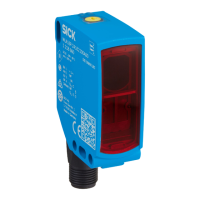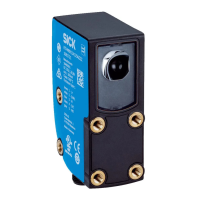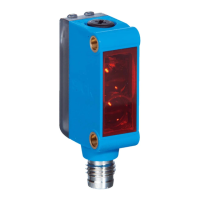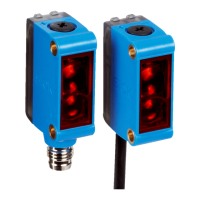OPERATING INSTRUCTIONS | Bulkscan LMS511 8014829/ZNC5/2017-06-06 | SICK
Subject to change without notice
56
COMMISSIONING
With level compensation:
Measured contour (bulk) and reference contour
correspond at the edge areas.
Without level compensation:
The conveyor belt has dropped. The bulk is under-
neath the reference contour.
Fig. 34: Compensation of the level of the conveyor belt
Tocompensateforthisdeviationcausedbytheweightofthebulk,youcancongure
Level compensation.
If the Bulkscan is correctly mounted over the transport rollers, it should not be be re-
quired to adjust the level of the conveyor belt under normal circumstances.
How to compensate the level (–100 to +100 mm):
Check on the Monitor tab, whether the measured contour (blue dots) matches the
reference contour in the unloaded edge areas of the conveyor belt.
On the Teach-incongurationbarmovetheLevel compensation slider so that the
measured contour (blue dots) matches the reference contour at the unloaded edge
areas of the conveyor belt.
◦ Positive values (0 to +100 mm) lower the reference contour to the level of the
conveyor belt.
◦ Negative values (–100 to 0 mm) raise the reference contour to the level of the
conveyor belt.
NotethattheconveyorbeltmustalwaysbewithintheradiusdenedbytheMaximum
distance value for correct measurements.
Click Apply level compensation. The scan view and the current measured values are
corrected accordingly.
Test the result and correct the level compensation until the measured contour
matches the reference contour in the edge areas.
8.1.2 Optimization for conveyor belts with slits or gaps
Some belts may have slits or gaps, which may lead to invalid measurement points while
teaching in the reference contour and therefore disturb it. These irregularities can be
corrected using the Optimization for belts with slits or gaps function.
Note
Note

